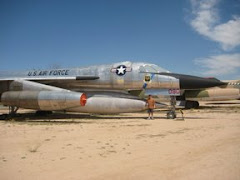The Northwest has become quite the meca for winged flight. That is to say, flight museums. I mean, sure, we have Boeing, and even a few other manufacturers, but museums is where you get the aircraft of the ages! I live in Central Washington and even Yakima, Washington has its own air museum. The McAllister Museum of Aviation has been celebrating the life and times of Charlie McAllister for several years now. He was a local aviation legend. He held a pilot’s license signed by one of the Wright brothers! This July the museum began a series of aircraft showcases every Saturday. This Saturday, today, was the first time I got the chance to visit. Today, they hosted a visit by the Historic Flight Museum’s Grumman F7F Tigercat!
Grumman began business in 1930. It was known for its Navy fighters! The Grumman “CATS” served the Navy well. It’s last “CAT” retired in September of 2006. The list of “CATS” is a long one. Including the Wildcat, Hellcat, Tigercat, Bearcat, Panther, Cougar, Tiger, and Tomcat! Grumman was known as the Grumman Ironworks by those who flew and maintained their aircraft. Grumman aircraft were known to bring their crews home when other aircraft would not.
The Tigercat was built to serve during WWII, however, the first shipment of Tigercats, like the first batch of Lockheed P-80s, missed the war by a small matter of time. They turned out to be just a might too big and too fast for even the largest carriers of the era (the Midway class). They were the Navy’s first twin engine fighter. It was the Navy’s first tri-cycle landing geared aircraft. And it was cool looking.
This particular aircraft was a fire-bomber. According to the owner/pilot, there are only 4 air-worthy F7F Tigercats in existence. He is John Sessions. He is the founder of the Historic Flight Museum, which opened its doors this spring at Paine Field, across the runway from the Flying Heritage Museum. He gave a short speech on the Tigercat and her flight characteristics.
(Above: John Sessions talking about his Tigercat)
Apparently, unlike a P-38, the Tigercat’s props turn in the same direction. This makes losing an engine at speeds under 140mph very bad. Another difference is that the ‘cat has radial (or ROUND) engines instead of in-line or V engines.
Sessions said the F7F had one kill during Korea: a WWI era biplane. For the most part they were used for recon, he said. The last F7F was retired from US Military service in 1954.
Whatever the case, the F7F was here!! Say “HELLO” to “BAD KITTY!”
You can see the four .50 calibers in the wing root, and the four 20mm canons in the nose. If this aircraft HAD deployed during WWII…let’s just say the Japanese pilots would have been hard pressed to escape with their lives. As it was the Grumman Hellcat had a terrific record in plane vs. plane engagements.
The Pratt & Whittney R2800s, as with ANY radial, leaked copious amounts of oil…but they sound SOOOO GOOD!!! With 18 cylinders in each engine, that was A LOT of horsepower! We were lucky to see this flying treasure!! We have Mr. Sessions to thank for his generous time and resources. Sharing this precious aircraft with the world is a gift. It is good that we have philanthropists who spend their money to bring good to the rest of us!
Here are a few more pictures so you can enjoy the clean lines of the F7F!!
The skies offered to decide our fate. Thunder rolled and Lightning flashed, but we stayed near our Iron Maiden. She promised to hold back the skies. In the end, she alone stood under the onslaught. She alone weathered the…weather.
Thank you Mr. Sessions! I look forward to seeing the rest of your collection!

























10 comments:
Such a gorgeous Cat. I got to watch her fly earlier this summer. She is still there, still well maintained.
Undeniably, one of the nicest small fighters to serve in the WW.2 theater. I built one long ago in my plastic model kit collection, as it salutes the many who, nobly served in WW.2 and other campaigns. Thank you to all who honorably served against a formidable enemy, to your immeasurable credit we defeated Germany, Japan and Italy, etc. Our brave Allies did not flee, they faced their opponent in every arena to protect our democracy, freedoms, liberties and more. Pay tribute to your aging and dying heroic veterans at a parade, visit an epitaph because without them history and the face of the world might be different. I would hope many such warplanes would be restored to remind us of the past, and to learn from those ugly wars to make the world a safer and better place. To the many who migrate all over (we are better because of our diversity) and others we owe a debt to respect our aging dying veterans who gave so much including our global mobility. Warring foreign nations of today need to fight their own battle fronts instead of us doing the costly deed for decades to come. We can do better and our brave did not pusillanimously flee an advancing enemy, they faced it head on to their credit instead of re-populating the world to strain global resources and economies. To those who served, salute - you wear an invisible heroes costume and your sacrifices shall never be forgotten. Great article and website. We can do better as a global society and war is not pretty; its ugly.
Post a Comment